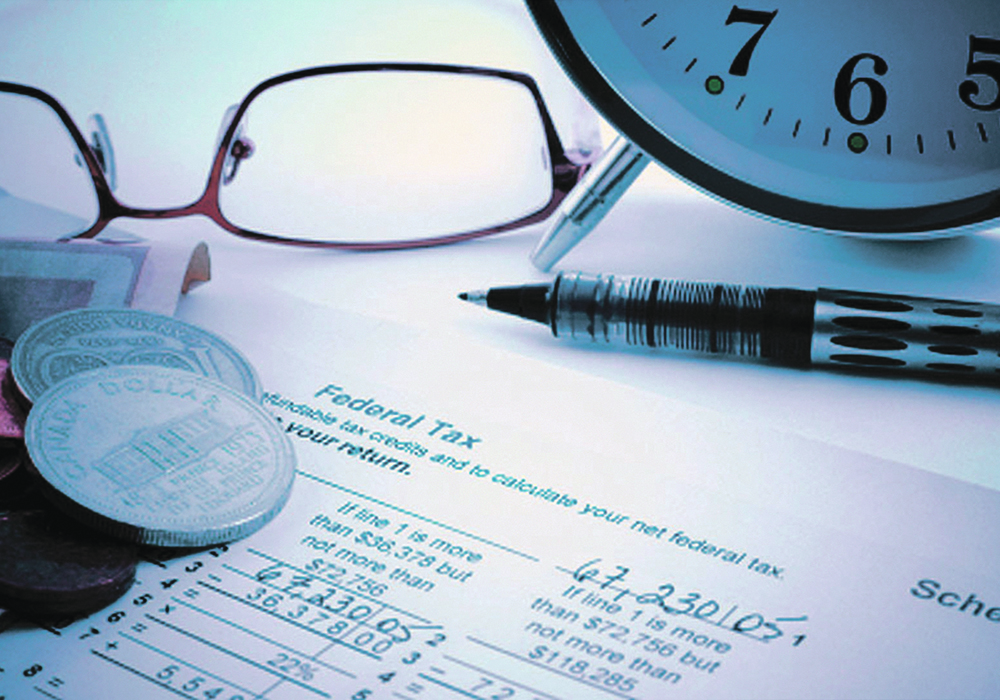Do you know how much cash basis taxable income you have right now?
Cash basis taxation for farmers is unique and gives a lot of flexibility for taxable income planning. However, this can create massive tax liabilities if you have too much cash basis taxable income.
Many producers wait until winter to get their books in order to determine their income and expenses. The proverb “an ounce of prevention is worth a pound of cure” is applicable here. Getting your books in order and planning in advance is much better than forgetting some income and having a huge tax bill.
Read Also

Budget seen as fairly solid, but worrying cracks appear
The reaction from the agriculture industry to prime minister Mark Carney’s first budget handed down November 4th has been largely positive.
If you are not incorporated, an extra $100,000 of unanticipated income taxed at the highest tax bracket in Saskatchewan would result in 47.5 per cent tax, or $47,500 of tax.
If you are in a corporation, and you have used up your small business deduction, an extra $100,000 of corporate income would result in 27 per cent tax in Saskatchewan, or $27,000 of corporate tax.
Estimated taxable income should take into account:
• Further cash basis income coming such as chemical rebates arriving in December.
• Taxable AgriInvest Fund 2 withdrawals.
• Further expenses that will be paid before year end.
• Removing personal portions of expenses and non-deductible items such as life insurance that aren’t tied to a loan.
• Carry forward optional or mandatory inventory adjustments from the previous year, which become a deduction this year.
• Prepaid expenses that were deducted on last year’s tax return should not be included in your current year expenses.
Make sure that other non-deductible items aren’t counted in expenses, such as principal payments on land, income tax payments and equipment loan principal payments that are already included in your capital assets.
• Capital cost allowance (CCA) on your assets — this is the tax basis depreciation on assets. For the past few years, immediate expensing on equipment purchases has allowed for large deductions. In 2024, immediate expensing is still available for unincorporated farms. Corporations don’t qualify for immediate expensing in 2024. Due to large immediate expensing claims in previous years, your CCA deduction this year could be much smaller than previous years because the equipment was already expensed for tax purposes.
Once the estimated cash basis income has been determined, the next step is planning for the remainder of the year.
If you have a cash basis loss, it is very easy. You can sell more inventory or do an inventory adjustment on your tax return to reach your target taxable income.
More planning is required when there is too much taxable income. A few options include:
• Defer any further income to next year. This can make next year’s income unmanageable because it is just postponing an eventual tax bill. Deferred income cannot be rolled to a corporation.
• Prebuy more expenses. Buying inputs for next year also works, although this also just defers a future tax bill because you won’t get the deduction next year.
• Pay more tax. No one likes paying tax, but it is better to pay tax at a lower rate than a higher rate. If you have a profitable farming operation, using up your first two tax brackets (up to $111,733 per person in 2024) takes advantage of the lower tax brackets. Claiming “poverty” and taxing less each year can save tax now, but it could eventually catch up with you. If you build up an extra $50,000 each year through deferring and prebuying instead of paying tax, after 10 years this suddenly becomes an unmanageable $500,000 income problem.
• Incorporate and use the corporate small business deduction. In Saskatchewan in 2024, corporations pay 10 per cent tax on the first $500,000 of taxable income, or $50,000 of tax on $500,000 of income. This is likely the lowest tax rate you will ever pay — make use of it. This is especially important if you are trying to fund a land purchase with farm income. Buying land using after tax corporate dollars at a 10 per cent tax rate is much cheaper than trying to buy land at a personal tax rate of 33 to 47.5 per cent.
• Buy some RRSPs. This is the only option available after Dec. 31. RRSP contributions that are made by March 1, 2025, are deductible against 2024 personal income, assuming you have RRSP contribution room available. The downside is that many farmers prefer to reinvest in the farming operation and land rather than tying money up in RRSPs.
What is your long-term plan for your deferred tax liability? If you farm as a sole proprietor and pass away, all your inventory and deferred income is taxable. This would mean a massive tax bill at death and could force your estate to sell assets or land just to pay the tax. Moving to a partnership or a corporation reduces the tax risk because it can be rolled to a surviving spouse or the next generation.
We recommend getting your accounting up to date and having your accountant run a tax estimate before your year end to avoid a tax bill surprise.By Levi Derksen
Levi Derksen, CPA, CGA, is a senior manager in the Ag Team at Buckberger Baerg & Partners LLP in Saskatoon.















